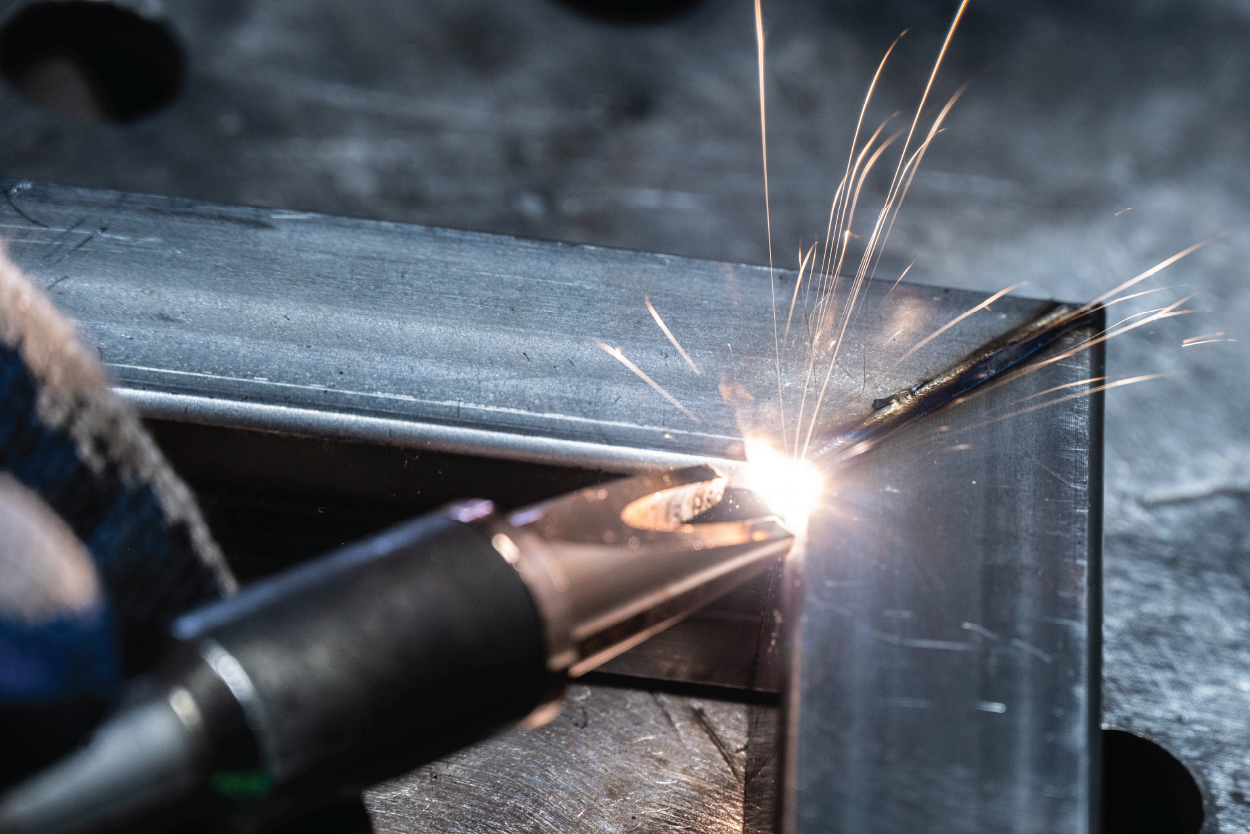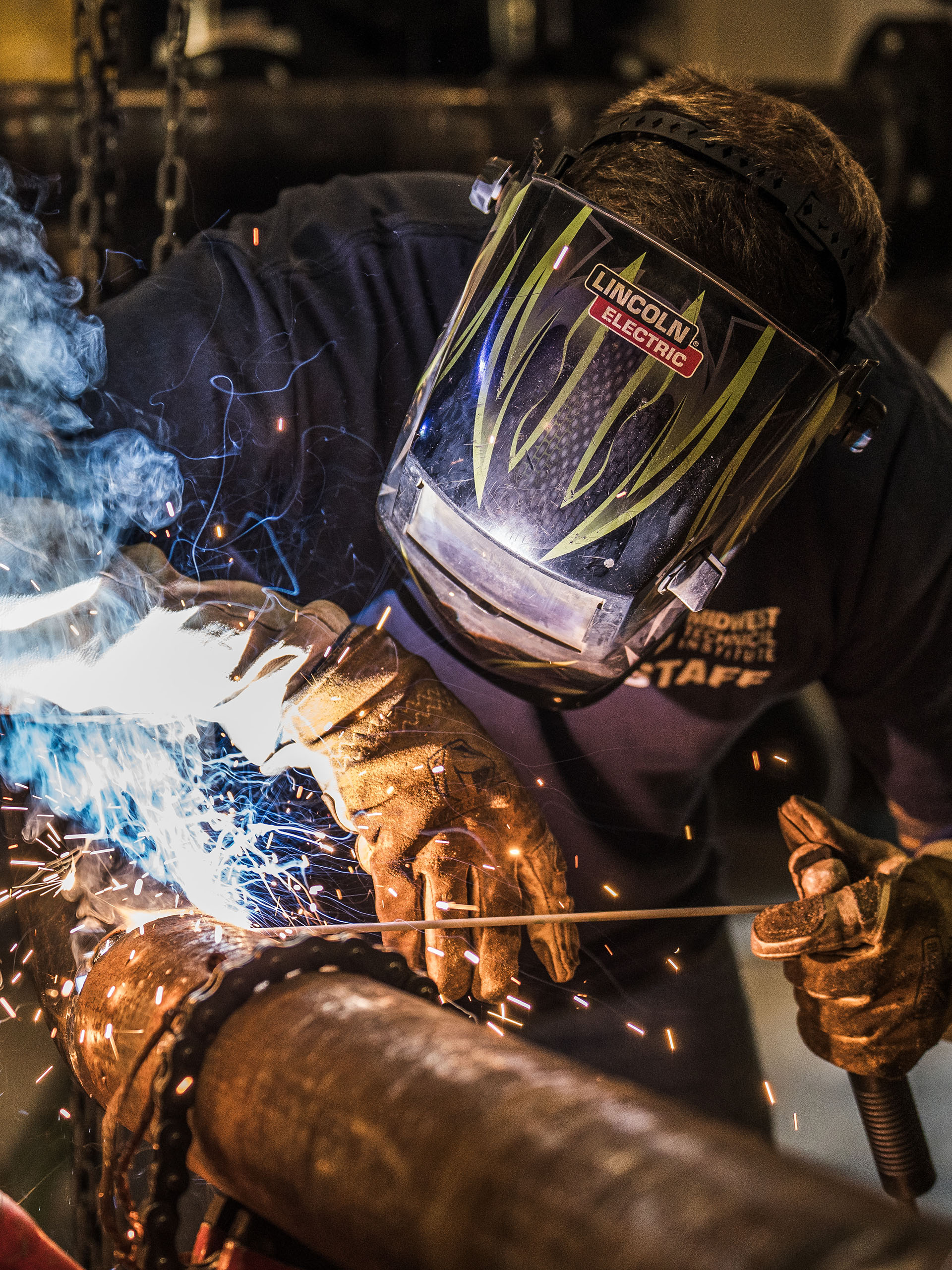Usual Welding Fixing Issues and How to Address Them Effectively
Welding repair services usually come across a variety of problems that can threaten the integrity of the end product. Common problems include poor infiltration, porosity, and misalignment, to name a few. Each problem provides one-of-a-kind difficulties that need certain methods for resolution. Understanding these concerns is important for welders intending to improve their outcomes and abilities. This discussion will certainly check out these typical welding repair work issues and reliable techniques to address them.
Insufficient Penetration
Insufficient infiltration happens when the weld metal fails to completely fuse with the base product, resulting in weak joints and potential architectural failures. This issue frequently comes from insufficient warm input, incorrect electrode angle, or improper welding rate. Welders might experience inadequate penetration as a result of a miscalculation of the required specifications for a specific product density or kind. Furthermore, contamination on the base material's surface area can prevent effective bonding, intensifying the problem. To attend to inadequate infiltration, welders ought to guarantee appropriate setups on their devices and preserve a tidy work surface area. Normal inspection of welds is suggested to determine any deficiencies early, enabling timely improvements and the prevention of jeopardized architectural stability in bonded settings up.
Porosity
Porosity is a typical problem in welded joints that materializes as small gas bubbles caught within the weld steel. This issue can compromise the stability of the weld, bring about reduced toughness and possible failure under tension. Montana Mobile Welding and Repair Welding. Porosity normally emerges from contamination, moisture, or incorrect welding methods, which permit gases to leave right into the molten weld pool. To attend to porosity, welders need to ensure appropriate surface area preparation, keep a tidy working environment, and use ideal welding parameters. Additionally, choosing the ideal filler product and securing gas can alleviate gas entrapment. Routine inspection and testing of welds can assist determine porosity early, assuring timely corrective activities are taken, therefore protecting the top quality and integrity of the bonded framework
Imbalance
Misalignment in welding can occur from different aspects, including improper setup and thermal development. Understanding the origin creates is vital for reliable resolution. Several improvement methods are offered to realign parts and guarantee architectural integrity.
Causes of Imbalance
Welding imbalance frequently originates from a range of underlying concerns that can jeopardize structural integrity. One main reason is incorrect fit-up of parts before welding, which can result in spaces and unequal surface areas. Variations in thermal development during the welding procedure can likewise lead to distortion, particularly if the products being joined have different coefficients of development. Furthermore, poor fixturing and clamping might fall short to hold parts securely in place, bring about movement throughout welding. Improperly conserved devices, including welding machines and devices, might present disparities in the weld grain, additional contributing to misalignment. Operator error, stemming from inadequate training or experience, can additionally play a considerable role in creating misaligned welds.

Modification Techniques Available
Attending to imbalance efficiently requires a mix of corrective methods customized to the certain issues at hand. One common approach is the usage of jigs or fixtures to hold elements in the correct placement throughout welding, making sure constant positioning. Additionally, preheating the products can help in reducing distortion and enhance fit-up. For significant misalignment, mechanical realignment strategies, such as utilizing hydraulic jacks or clamps, can be utilized to deal with the position before welding. Post-weld warmth treatment may also be required to relieve anxieties triggered by imbalance. Cautious evaluation and change during the configuration phase can prevent misalignment issues from becoming considerable issues, advertising a smoother welding process and boosting overall structural integrity.
Distortion
Distortion is a common obstacle in welding that can occur from numerous elements, including uneven heating and air conditioning. Recognizing the reasons of distortion is essential for implementing efficient avoidance techniques. Resolving this problem not only boosts architectural honesty but likewise boosts the overall high quality of the weld.
Reasons for Distortion
When based on the intense warm of welding, products frequently undergo adjustments that can lead to distortion. This sensation largely emerges from thermal development and contraction throughout the welding procedure. As the weld area heats up, the material expands; upon air conditioning, it gets, which can develop inner tensions. In enhancement, unequal home heating across a work surface can aggravate these anxieties, leading to bending or bending. The sort of material also plays a considerable role; steels with differing thermal conductivity and coefficients of development may react in a different way, causing uncertain distortions. Moreover, bad joint style and poor fixturing can add to misalignment during welding, increasing the likelihood of distortion. Understanding these causes is necessary for effective welding repair service and avoidance approaches.
Prevention Techniques
Reliable prevention strategies for distortion during welding concentrate on controlling warm input and making certain correct joint layout. Keeping a constant warm input assists to decrease thermal expansion and tightening, which can cause distortion. Utilizing techniques such as pre-heating the workpiece can also minimize the temperature slope, advertising uniform home heating. Additionally, choosing ideal joint designs, such as T-joints or lap joints, can boost stability and decrease anxiety concentrations. Carrying out proper fixturing to secure the work surfaces in position further help in preserving alignment during the welding procedure. Staggered welding sequences can disperse warmth much more uniformly, avoiding local distortion. By using these methods, welders can greatly decrease the chance of distortion and boost the overall high quality of their welds.
Splitting
Cracking is a typical concern encountered in welding repair work, typically arising from various factors such as inappropriate air conditioning prices, product selection, or poor joint prep work. The incident of cracks can significantly jeopardize the stability of the weld, bring about prospective failings throughout operation. To address this problem, welders need to initially analyze the source, guaranteeing that materials work and properly picked for the details application. Furthermore, managing the cooling price throughout the welding process is important; quick cooling can generate stress and result in splitting. Correct joint design and preparation also add to lessening the danger. Executing these strategies can boost weld top quality and durability, ultimately decreasing the possibility of fracturing in finished weldments.

Incomplete Blend
A considerable concern in welding repairs is incomplete fusion, which occurs when the weld metal does not appropriately bond with the base product or previous weld passes - Belgrade Fabrication. This defect can result in weaknesses in the joint, potentially compromising the stability of the welded framework. Elements adding to insufficient fusion include insufficient warmth input, incorrect welding strategy, and contamination useful content of the surfaces being signed up with. To resolve this concern efficiently, welders must assure correct pre-weld cleaning and surface preparation, as well as readjust their welding criteria to attain ample penetration and combination. Normal assessment during the welding process can likewise aid identify incomplete combination early, permitting timely restorative procedures to enhance the general top quality of the weld
Overheating
While welding fixings can boost architectural integrity, overheating offers a considerable challenge that can cause material deterioration. Too much warmth during welding can change the mechanical homes of steels, leading to lowered toughness, increased brittleness, and bending. This sensation is especially critical in high-stress applications where structural integrity is critical. Recognizing getting too hot can involve visual evaluations for discoloration or distortion, along with keeping track of temperature level during the welding process. To alleviate the threats related to overheating, welders must metal man welder utilize suitable techniques, such as managing warm input, changing traveling speed, and utilizing suitable filler materials. Furthermore, implementing pre- and post-weld warmth therapies can aid recover material residential or commercial properties and boost the overall top quality of the repair service, making certain long-lasting efficiency and security.
Regularly Asked Concerns
What Are the Common Indications of a Welding Issue?

Exactly How Can I Examine My Welds for Top quality?
To evaluate welds for quality, one can use aesthetic inspections, ultrasonic testing, and radiographic approaches. Each technique ensures structural honesty, recognizes defects, and validates adherence to specified criteria, inevitably improving the reliability of the bonded joints.
What Security Preventative Measures Should I Take While Welding?
When welding, one should prioritize safety and security by using suitable personal protective devices, ensuring correct air flow, securing flammable materials away, maintaining a clean office, and recognizing surroundings to avoid injuries and accidents.
Can I Repair a Weld Without Renovating the Entire Joint?
Fixing a weld without redoing the whole joint is possible, relying on the damage (Montana Mobile Welding and Repair Welding). Methods such as grinding, including filler product, or using a welding process can effectively address particular problems while protecting the surrounding framework
What Devices Are Crucial for Efficient Welding Repair Works?
Important devices for efficient welding repairs include a see this here welding maker, cord brush, mill, protective equipment, clamps, and filler materials. Each tool plays an essential role in making certain high quality and safety and security throughout the repair process. Porosity commonly occurs from contamination, moisture, or incorrect welding strategies, which permit gases to leave into the molten weld pool. Inadequately kept tools, including welding machines and tools, may introduce inconsistencies in the weld grain, further contributing to misalignment. When subjected to the intense warmth of welding, products often undergo adjustments that can lead to distortion. Fracturing is an usual issue come across in welding fixings, usually resulting from various factors such as inappropriate air conditioning rates, product option, or insufficient joint preparation. A substantial issue in welding fixings is insufficient fusion, which occurs when the weld metal does not sufficiently bond with the base product or previous weld passes.
Comments on “Have you seen signs of incomplete fusion? Montana Mobile Welding and Repair explains how to detect them”